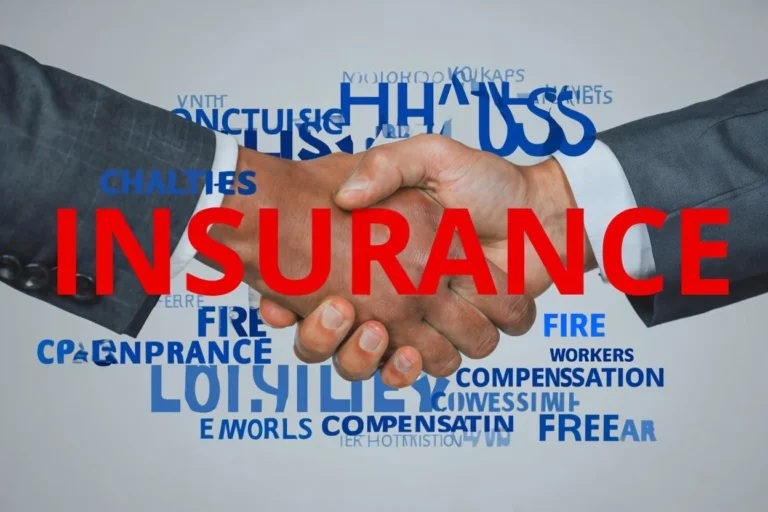Riding through the vast landscapes of Texas on your motorcycle can be an exhilarating experience, whether it’s navigating the bustling streets of Houston or the winding hill country roads. Each twist and turn brings a new adventure, and with every mile, there’s a story to tell. However, as thrilling as it is, the unpredictability of the open road means that ensuring you have the Texas motorcycle insurance offers is not just a legal requirement, but also a lifeline.
Understanding the essentials of Motorcycle Insurance In Texas helps you protect not only your bike but also your peace of mind. With comprehensive coverage options tailored for the unique demands of Texas riders, you can safeguard against the unexpected—be it an accident, theft, or any number of unforeseen events. Investing in Texas motorcycle insurance is more than just compliance; it’s about preserving the freedom to ride with confidence.
Table of Contents
Understanding Motorcycle Insurance Basics
When riding a Texas motorcycle insurance, it’s crucial to understand the basics of insurance. Motorcycle insurance is a fundamental financial agreement between you, the rider, and an insurance company. The insurer provides financial coverage for losses incurred from various incidents, while you pay premiums.
What is Motorcycle Insurance?
A Texas motorcycle insurance ensures that riders are protected against financial losses stemming from accidents, theft, vandalism, and even natural disasters, depending on the terms of the policy. Essentially, it’s a way to safeguard your investment in your motorcycle and cover any potential damage or loss arising from unforeseen events. This coverage typically includes different types of protection such as liability, collision, and comprehensive insurance, all of which are designed to cater to various needs and scenarios that you might encounter while riding.
Why is Motorcycle Insurance Important?
Having Texas motorcycle insurance is essential not only for protecting yourself financially but also for complying with state laws. A good Texas motorcycle insurance ensures that you are legally covered to ride on public roads, thereby avoiding hefty fines and legal trouble. Moreover, it provides peace of mind, knowing that in the event of an accident or any other unfortunate incident, you won’t be left bearing the entire financial burden alone. Proper insurance is a small price to pay for the reassurance it offers, making it a critical component of responsible motorcycle ownership.
Types of Motorcycle Insurance Coverage
Understanding the various motorcycle coverage options available can help you select the best plan that offers both protection and value. In Texas, there are several key types of motorcycle insurance coverage essential for every rider.
Liability Coverage
Liability coverage is the cornerstone of motorcycle insurance. It helps pay for bodily injury and property damage that you may cause to others in an accident. This coverage is crucial as it provides financial support in unfortunate events, ensuring you meet legal requirements and protect others on the road.
Collision Coverage
Collision coverage assists in repairing or replacing your motorcycle if it is damaged in an accident, regardless of who is at fault. This type of coverage is particularly beneficial for those concerned about the financial impact of accident-related repairs or total losses. Whether it’s a minor fender bender or a more serious collision, having this coverage ensures your motorcycle can be promptly fixed or replaced.
Comprehensive Coverage
Comprehensive coverage protects against non-collision-related incidents such as theft, vandalism, fire, or natural disasters. It’s a crucial coverage for safeguarding your motorcycle from a wide range of potential threats. From hailstorms to theft, comprehensive coverage ensures you’re protected against the unexpected.
Uninsured/Underinsured Motorist Coverage
Uninsured/Underinsured motorist coverage protects you if you’re involved in an accident with a driver who has insufficient or no insurance. This type of coverage is vital in Texas, where not all drivers carry adequate insurance. By adding this layer of protection, you can safeguard yourself against the financial strain of dealing with an underinsured or uninsured motorist.
To sum up, exploring affordable motorcycle insurance Texas and the various motorcycle coverage options available can help you find the right balance of coverage and cost. Ensuring you’re adequately protected with the right mix of liability, collision, comprehensive, and uninsured/underinsured motorist coverage is crucial for every biker in Texas.
Texas Motorcycle Insurance Requirements
When riding in Texas, understanding the state’s specific motorcycle insurance laws is crucial. Texas motorbike insurance requirements are designed to ensure you are covered in unfortunate accidents, protecting both you and other road users.
Minimum Liability Coverage in Texas
The Texas motorcycle insurance imposes require all motorcyclists to maintain a minimum amount of liability coverage. The minimum liability coverage mandated by Texas motorcycle insurance requirements includes:
- Bodily Injury Liability: At least $30,000 per person injured in an accident, with a total of $60,000 per accident.
- Property Damage Liability: At least $25,000 for damage to others’ property in an accident.
Additional Coverage Options
Beyond the minimum requirements, Texas allows riders to opt for additional coverage to enhance their protection. Some of the popular extra options are:
- Collision Coverage: Pays for damages to your motorcycle from a collision, regardless of fault.
- Comprehensive Coverage: Covers losses from non-collision incidents like theft, fire, or vandalism.
- Medical Payments: Helps pay for medical expenses in the event of an accident.
- Customized Parts and Equipment Coverage: Covers the after-market parts and accessories on your motorcycle.
Understanding these Texas motorcycle insurance requirements and the various coverage options ensures you meet the motorcycle insurance laws in Texas while maximizing your protection on the road.
Factors Affecting Your Motorcycle Insurance Premium
When determining your insurance costs, various elements come into play. Understanding these factors can help you better anticipate your premium and make informed decisions about Texas motorcycle coverage.
Motorcycle Make and Model
One of the key insurance premium factors in Texas is the make and model of your motorcycle. High-powered and high-end motorcycles typically incur higher insurance premiums due to their increased risk and repair costs. For instance, a sportbike generally costs more to insure than a standard cruiser. Insurance providers assess the risk associated with different models and set premiums accordingly.
Rider Experience
Your experience as a rider, including your age and years of riding, significantly impacts your insurance rates. More seasoned riders, especially those with clean riding records, are often rewarded with lower premiums. Beginners, on the other hand, face higher rates due to the perceived higher risk associated with less experience.
Usage and Mileage
How frequently you ride and the total annual mileage also influence your insurance premium in Texas. Those who use their motorcycles for daily commuting may see higher rates compared to occasional riders. Insurance companies often apply discounts for lower mileage, reducing premiums for motorcycles kept mostly as recreational vehicles.
Discounts on Motorcycle Insurance in Texas
Finding discounts on motorcycle insurance in Texas can help you save on bike insurance Texas. Many insurers provide a variety of discounts that you can take advantage of to lower your premiums. Let’s explore some of the common discounts you may be eligible for.
Safe Riding Discounts
If you have a clean riding record, you might be eligible for safe riding discounts. Insurance providers often reward riders who have no history of accidents or traffic violations with lower premiums. This can be a great way to save on bike insurance Texas, as maintaining a safe riding record demonstrates your commitment to safety on the road.
Multi-Policy Discounts
Another effective way to avail discounts on Texas motorcycle insurance is by bundling policies. When you combine your motorcycle insurance with other types of insurance, such as auto or home insurance, insurers usually offer multi-policy discounts. This not only simplifies your insurance management but also provides substantial savings across multiple policies.
Membership Discounts
Membership in certain riding clubs or associations can also bring you discounts on motorcycle insurance. Organizations like the American Motorcyclist Association (AMA) collaborate with insurance companies to offer exclusive discounts to their members. Be sure to check with your insurance provider about any associations you belong to that might help you save on Texas motorcycle insurance.
In summation, taking advantage of safe riding, multi-policy, and membership discounts can significantly reduce your motorcycle insurance costs in Texas.
How to Choose the Right Motorcycle Insurance
Choosing the right insurance for your motorcycle in Texas requires careful consideration of your unique needs and options available to you. Here’s how to ensure you make the best decision for your situation.
Assessing Your Needs
First, consider your riding habits and the value of your motorcycle. If you use your bike daily or own an expensive model, getting comprehensive coverage might be beneficial. Your comfort with risk also plays a pivotal role. Those who prefer peace of mind may opt for a full coverage policy, while others may find basic liability sufficient. Understanding your requirements will help you identify the best Texas motorcycle insurance has to offer.
Comparing Insurance Providers
Once you have a clear idea of your needs, the next step is to compare different insurance providers. Important factors to consider include:
- Coverage options available
- Customer service reviews
- Claim process efficiency
- Overall value for money
A Texas motorcycle insurance comparison riders trust often reveals significant differences among providers, making it essential to scrutinize these aspects thoroughly. Here’s a comparative table that can guide you:
| Provider | Coverage Options | Customer Service | Claim Process | Value |
|---|---|---|---|---|
| Geico | Comprehensive, Collision, Liability | Excellent | Quick and Efficient | High |
| Progressive | Full Coverage, Custom Parts | Good | Moderate Speed | Moderate |
| State Farm | Comprehensive, Medical Payments | Excellent | Quick | High |
| Allstate | Uninsured/Underinsured Motorist | Good | Standard | Moderate |
By assessing your needs and performing a motorcycle insurance comparison Texas-specific, you can find the policy that offers the best combination of coverage and value for your situation.
The Claims Process for Motorcycle Insurance
Understanding the procedure for filing a motorcycle insurance claim Texas is essential for ensuring a smooth resolution after an accident. Familiarizing yourself with this process can reduce stress and expedite your claim.
Reporting an Accident
In the unfortunate event of a motorcycle accident, promptly reporting the incident is crucial. To begin, you should file a motorcycle accident report Texas with local law enforcement. Then, contact your insurance provider to inform them of the accident. Providing comprehensive details, including the date, time, and location of the accident, as well as the contact information of any witnesses, will facilitate the claims process.
What to Expect During the Claims Process
Once an accident is reported, the initial steps involve the assessment of damages and determination of fault. Your insurance company may dispatch an adjuster to inspect the motorcycle and evaluate the extent of the damage. Be prepared to provide any necessary documents, such as the police report and medical records if injuries occurred.
After the assessment, your insurer will decide whether to approve or deny the claim based on policy coverage. If approved, they will discuss the settlement amount, which covers repair costs or, in some cases, replacement of the motorcycle. Understanding these steps can help you navigate the motorcycle insurance claim Texas process efficiently and ensure you receive a fair resolution.
Tips for Lowering Your Motorcycle Insurance Costs
Reducing motorcycle insurance costs in Texas can be achieved through various strategies that promote safe riding and responsible habits. Here are some valuable tips to help you on this journey:
Maintaining a Clean Riding Record
One of the most effective ways to keep your insurance premiums low is by maintaining a clean riding record. Avoiding accidents and traffic violations demonstrates your commitment to safe riding, which insurance companies reward with lower rates. Over time, your diligent riding can significantly contribute to reduced motorcycle insurance costs in Texas.
Taking Safety Courses
Completing a motorcycle safety course not only enhances your riding skills but also provides financial benefits. Most insurance providers offer a motorcycle safety course insurance discount to riders who complete an approved safety program. These courses emphasize defensive driving techniques and safety measures, enabling you to become a safer rider and enjoy lower insurance premiums.
Ensuring you have the necessary coverage while keeping costs manageable requires strategic efforts focused on safety and responsibility. Implementing these tips can help you enjoy the ride while keeping your expenses in check.
Frequently Asked Questions about Motorcycle Insurance
When it comes to understanding motorcycle insurance, there are common questions riders often have. These important inquiries can help you better manage your policy and make more informed decisions. From strategies to lower your premium to what actions to take after an accident, understanding these aspects can significantly benefit you.
How Can I Lower My Premium?
Reducing your motorcycle insurance premium in Texas can be achieved through various methods. Maintaining a clean riding record and avoiding traffic violations are crucial. Additionally, bundling multiple policies, like combining your motorcycle and auto insurance, can lead to discounts. Another effective approach is participating in safety courses which not only improve your riding skills but also often qualify you for premium reductions.
What Should I Do After an Accident?
If you find yourself involved in an accident, the first step is to ensure your safety and the safety of others. Call 911 for emergency assistance if needed. Next, document the scene by taking photos and gathering contact information from any witnesses. Immediately report the incident to your insurance provider to initiate the claims process. Knowing what to expect can help streamline the procedure and minimize hassle.
Is Motorcycle Insurance Transferable?
Texas motorcycle insurance generally do allow for transferability under certain conditions. If you sell your motorcycle or purchase a new one, you may be able to transfer your existing insurance policy to the new owner or the new bike. However, it’s essential to notify your insurer about these changes to ensure continuous coverage and to align your policy with the new vehicle’s specifics.
Understanding these Texas motorcycle insurance provides solid motorcycle insurance guidance Texas riders need. This knowledge helps ensure you are well-prepared to handle any situation and maintain an appropriate level of coverage.
FAQ
What is Motorcycle Insurance?
Motorcycle insurance is a contract between a rider and an insurance company where the insurer provides financial coverage for losses in exchange for premiums. It can cover a variety of incidents depending on the specifics of the policy, including accidents, theft, vandalism, and natural disasters.
Why is Motorcycle Insurance Important?
Motorcycle insurance is essential for both legal compliance and personal protection. It helps protect you financially from accident-related losses and ensures you’re legally covered to ride on public roads. It also offers peace of mind by providing coverage against theft and other unforeseen circumstances.
What are the minimum liability coverage requirements for motorcycles in Texas?
Texas law requires all motorcyclists to carry a minimum amount of liability insurance. This coverage must include at least ,000 for bodily injury per person, ,000 for bodily injury per accident, and ,000 for property damage per accident.
How can I lower my motorcycle insurance premium in Texas?
There are several strategies to lower your motorcycle insurance premium in Texas. Maintaining a clean riding record, taking approved motorcycle safety courses, and bundling your motorcycle insurance with other policies like auto or home insurance can help reduce costs. You could also receive discounts by being a member of certain rider clubs or associations.
What types of motorcycle insurance coverage options are available?
Different types of motorcycle insurance coverage include liability coverage, collision coverage, comprehensive coverage, and uninsured/underinsured motorist coverage. Liability coverage helps pay for bodily injury and property damage caused to others. Collision coverage covers repairs or replacement of your motorcycle after an accident. Comprehensive coverage protects against non-collision incidents like theft or fire. Uninsured/underinsured motorist coverage protects you if you’re involved in an accident with a driver who has insufficient or no insurance.
What should I do after a motorcycle accident in Texas?
After a motorcycle accident in Texas, you should first ensure your safety and seek medical attention if necessary. Then, promptly report the accident to your insurance provider to initiate the claims process. Gathering and documenting evidence at the scene, such as photographs and witness information, can also help with your claim.
Is motorcycle insurance transferable if I sell my bike in Texas?
Motorcycle insurance is generally not transferable when you sell your bike. You will need to cancel your policy and, if applicable, initiate a new policy for a different motorcycle. Contact your insurance provider to discuss the process and ensure continuous coverage.
What factors affect my motorcycle insurance premium in Texas?
Various factors impact your motorcycle insurance premium in Texas, including the make and model of your motorcycle, your age, and your riding experience. The frequency of your motorcycle use and your annual mileage also play a role in determining your insurance costs. Generally, higher-powered bikes and less experienced riders will face higher premiums.
Are there discounts available for motorcycle insurance in Texas?
Yes, there are several discounts available for motorcycle insurance in Texas. Safe riding discounts are often awarded to riders with a clean record devoid of accidents or traffic violations. Multi-policy discounts can be availed by bundling motorcycle insurance with other types of insurance such as auto or home. Membership in certain rider clubs or associations may also qualify you for additional discounts.
How do I choose the right motorcycle insurance in Texas?
To choose the right motorcycle insurance in Texas, start by assessing your individual coverage needs based on your riding habits, the value of your motorcycle, and your comfort with risk. Compare various insurance providers to evaluate coverage options, customer service quality, claims process efficiency, and overall value to ensure you select the best policy for your requirements.
What is the motorcycle insurance claims process in Texas?
The claims process for motorcycle insurance in Texas typically begins with reporting the accident to your insurance provider. Next, you’ll undergo an assessment of damages and determinations of fault. Depending on the specifics of the incident and your coverage, the insurer will then process and settle your claim. Understanding this process can help prepare you for making a claim efficiently.
[hurrytimer id=”503″]












